More From the Los Angeles Times
-
-
Nov. 14, 2024
-
-
A view of the Vehicle Assembly Building, right, is seen from atop the over 400 foot high mobile launcher structure that will support NASA’s Space Launch System (SLS) at the Kennedy Space Center is seen, Wednesday, Aug. 19, 2015, in Cape Canaveral, Fla. SLS is the agency’s new rocket that will launch astronauts in the Orion spacecraft on missions to an asteroid and eventually to Mars. (AP Photo/John Raoux) ORG XMIT: KSC103 (John Raoux / Associated Press)
See pictures and conceptual images of the new Space Launch System (SLS) and Orion Multipurpose Crew Vehicle for the future of human exploration beyond Earth orbit.
The completed mobile launcher structure that will support NASA’s Space Launch System (SLS) at the Kennedy Space Center is seen, Wednesday, Aug. 19, 2015, in Cape Canaveral, Fla. SLS is the agency’s new rocket that will launch astronauts in the Orion spacecraft on missions to an asteroid and eventually to Mars. (AP Photo/John Raoux) ORG XMIT: KSC102 (John Raoux / Associated Press)
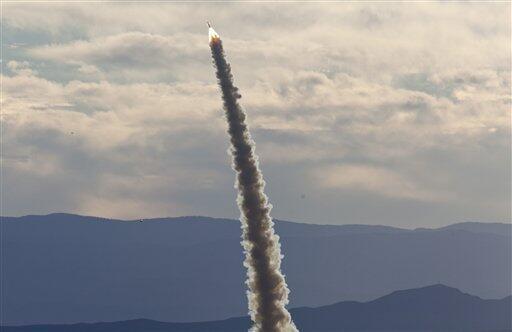
The new Orion crew capsule is catapulted into the air on Thursday, May 6, 2010 at White Sands Missile Range, N.M., during a test of Orion’s launch-abort system, which will whisk astronauts and the capsule to safety in case of a problem on the launch pad, such as a fire, or during the climb to orbit. The Orion capsule was originally designed to take astronauts back to the moon. But President Obama in February killed NASA’s $100 billion plans to return to the moon, redirecting the money for new rocket technology research. (AP Photo/Craig Fritz) ( / AP)
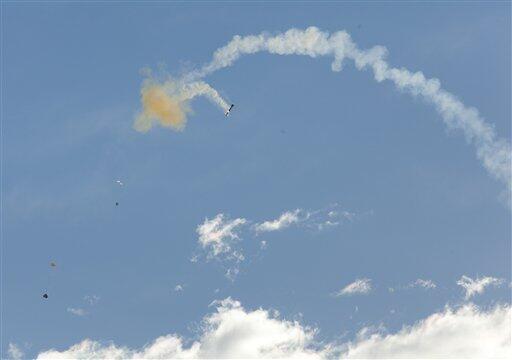
The new Orion crew capsule, far left, is shown on Thursday, May 6, 2010 at White Sands Missile Range, N.M., during a test of Orion’s launch-abort system, which will whisk astronauts and the capsule to safety in case of a problem on the launch pad, such as a fire, or during the climb to orbit. The Orion capsule was originally designed to take astronauts back to the moon. But President Obama in February killed NASA’s $100 billion plans to return to the moon, redirecting the money for new rocket technology research. (AP Photo/Craig Fritz) ( / AP)
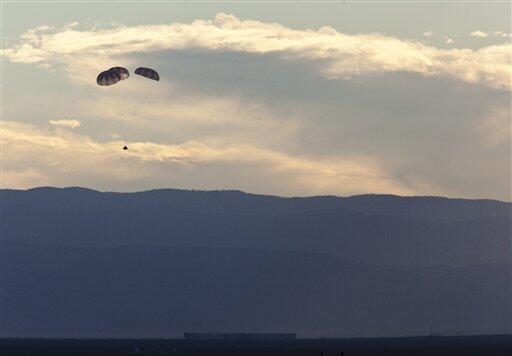
The new Orion crew capsule with parachutes deployed is shown after it was catapulted into the air on Thursday, May 6, 2010 at White Sands Missile Range, N.M., during a test of Orion’s launch-abort system, which will whisk astronauts and the capsule to safety in case of a problem on the launch pad, such as a fire, or during the climb to orbit. The Orion capsule was originally designed to take astronauts back to the moon. But President Obama in February killed NASA’s $100 billion plans to return to the moon, redirecting the money for new rocket technology research. (AP Photo/Craig Fritz) ( / AP)
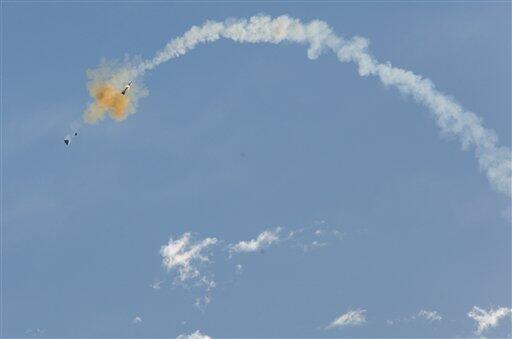
The new Orion crew capsule, far left, is shown on Thursday, May 6, 2010 at White Sands Missile Range, N.M., during a test of Orion’s launch-abort system, which will whisk astronauts and the capsule to safety in case of a problem on the launch pad, such as a fire, or during the climb to orbit. The Orion capsule was originally designed to take astronauts back to the moon. But President Obama in February killed NASA’s $100 billion plans to return to the moon, redirecting the money for new rocket technology research. (AP Photo/Craig Fritz) ( / AP)
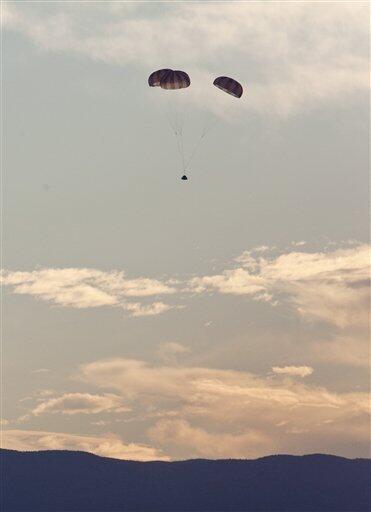
The new Orion crew capsule with parachutes deployed is shown after it was catapulted into the air on Thursday, May 6, 2010 at White Sands Missile Range, N.M., during a test of Orion’s launch-abort system, which will whisk astronauts and the capsule to safety in case of a problem on the launch pad, such as a fire, or during the climb to orbit. The Orion capsule was originally designed to take astronauts back to the moon. But President Obama in February killed NASA’s $100 billion plans to return to the moon, redirecting the money for new rocket technology research. (AP Photo/Craig Fritz) ( / AP)
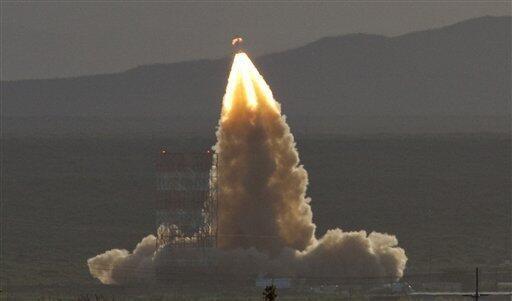
The new Orion crew capsule is catapulted into the air on Thursday, May 6, 2010 at White Sands Missile Range, N.M., during a test of Orion’s launch-abort system, which will whisk astronauts and the capsule to safety in case of a problem on the launch pad, such as a fire, or during the climb to orbit. The Orion capsule was originally designed to take astronauts back to the moon. But President Obama in February killed NASA’s $100 billion plans to return to the moon, redirecting the money for new rocket technology research. (AP Photo/Craig Fritz) ( / AP)
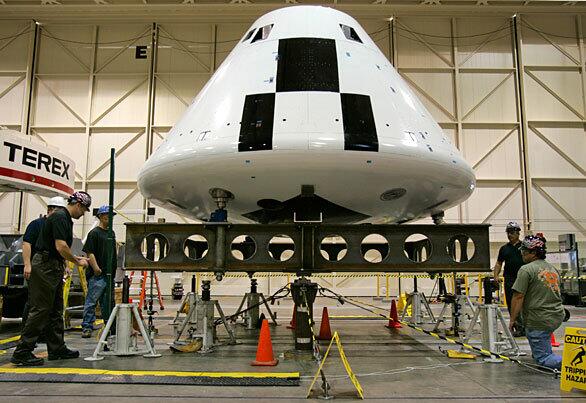
A test model of the Orion Crew Exploration Vehicle, NASA’s next-generation space capsule, is rolled out at Edwards Air Force Base in the Mojave Desert in October 2008. The Orion vehicle looks strikingly similar to the Apollo space capsule, but it is larger and will carry six astronauts instead of three. NASA is aiming to send Americans to the moon aboard Orion by 2020. (Irfan Khan/Los Angeles Times)
The
A full-size mockup of the Orion crew exploration vehicle is displayed by
The
A full-size mockup of the Orion crew exploration vehicle is displayed by
Schoolchildren gather around a full-size mockup of the Orion crew exploration vehicle which
Schoolchildren gather around a full-size mockup of the Orion crew exploration vehicle which
A full-size mockup of the Orion crew exploration vehicle is displayed on the National Mall in Washington, Monday, March 30, 2009. (Haraz N. Ghanbari / Associated Press)
With the capitol in the background, a full-size mockup of the Orion crew exploration vehicle is displayed on the National Mall in Washington, Monday, March 30, 2009. (Haraz N. Ghanbari / Associated Press)
The
Schoolchildren gather around a full-size mockup of the Orion crew exploration vehicle which
A full-size mockup of the Orion crew exploration vehicle is displayed on the National Mall in Washington, Monday, March 30, 2009. (Haraz N. Ghanbari / Associated Press)
Nov. 14, 2024